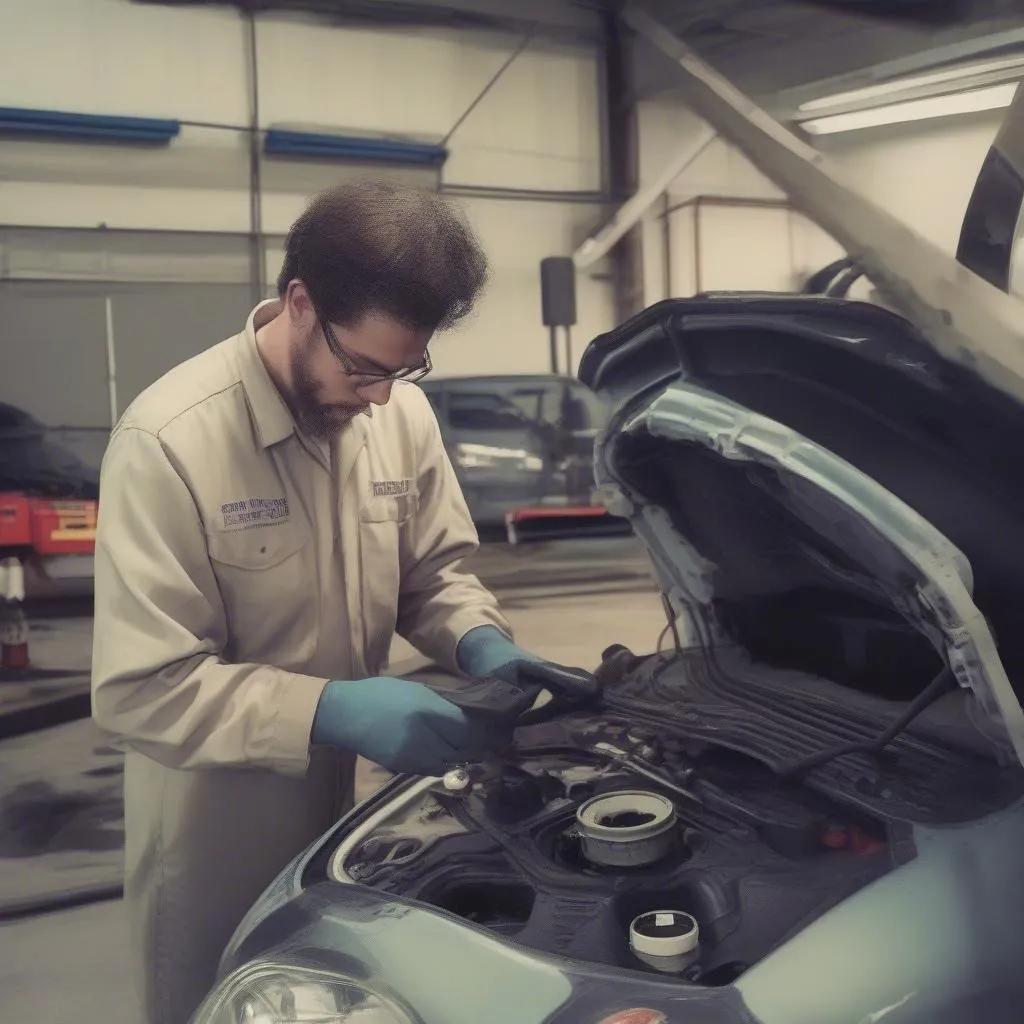Imagine this: You’re cruising down the highway, enjoying the open road, when suddenly your car starts to behave strangely. It jerks, shifts roughly, or even refuses to shift altogether. You pull over, check under the hood, but everything seems fine. What’s going on?
Could it be your transmission? And more importantly, can a scan tool diagnose this problem?
Understanding the Question:
The question “Can a scan tool diagnose a bad transmission?” is a common one among car owners. It’s a question that stems from a desire to understand the capabilities of diagnostic tools and their ability to identify transmission issues.
From a car mechanic’s perspective, a scan tool is a vital tool for identifying potential problems within a car’s complex electronic systems. It can read and interpret data from various sensors and modules, including the transmission control unit (TCM).
From a technical standpoint, a scan tool can identify certain transmission problems, but it’s not always a perfect solution. It can detect:
- Codes related to transmission solenoids: These solenoids control the flow of hydraulic fluid within the transmission, and a malfunctioning solenoid can lead to shifting problems.
- Codes related to transmission sensors: These sensors monitor the transmission’s operating conditions, and a faulty sensor can provide inaccurate information to the TCM.
- Codes related to the TCM itself: A faulty TCM can cause a variety of transmission problems, and a scan tool can identify these issues.
However, a scan tool might not be able to diagnose all transmission problems.
Can a Scan Tool Diagnose a Bad Transmission?
The answer is: It depends.
Here’s why:
- A scan tool might not be able to detect all transmission problems. Some problems, like worn-out clutches or internal damage, might not trigger a diagnostic code.
- Even if a code is present, it might not always be a reliable indicator of a bad transmission. There could be other underlying issues causing the code, requiring further investigation.
Think of it like this: A scan tool is like a doctor who can diagnose common illnesses, but it might not be able to detect complex or hidden conditions.
How to Troubleshoot Transmission Issues:
If you suspect your transmission is going out, here’s what you can do:
- Get a scan tool. This is the first step in diagnosing any car problem. If you’re unsure which scan tool to use, consult a reputable mechanic or visit a website like DiagXCar.com.
- Read and interpret the diagnostic codes. Once you have the codes, look them up in a repair manual or online database. This will help you understand what the codes mean and what potential problems they might indicate.
- Inspect the transmission fluid. Check the fluid level and color. If the fluid is dark or smells burnt, it’s a sign that the transmission may be experiencing problems.
- Listen for any unusual noises. Does your transmission make any grinding, clunking, or whining noises? These could be signs of internal damage.
- Drive the car and observe its performance. Does it shift smoothly? Does it hesitate when accelerating? These symptoms can provide valuable clues about the problem.
- Consult a professional mechanic. If you’re unable to diagnose the problem yourself, it’s best to take your car to a reputable mechanic for inspection.
Frequently Asked Questions:
What are some other transmission problems that a scan tool can diagnose?
A scan tool can detect a wide range of transmission problems, including:
- Shifting problems: The scan tool can read codes related to shifting problems, such as delayed engagement, rough shifts, and slipping.
- Transmission overheating: The scan tool can access sensor data related to transmission temperature.
- Transmission fluid leaks: The scan tool can sometimes identify leaks in the transmission system based on fluid pressure readings.
Can a scan tool tell me the exact cause of my transmission problem?
No, a scan tool can only provide a general indication of the problem. To determine the exact cause, a mechanic may need to perform further diagnostics, such as inspecting the transmission fluid or performing a pressure test.
If my scan tool doesn’t show any codes, does that mean my transmission is fine?
Not necessarily. As mentioned earlier, some transmission problems may not trigger a diagnostic code.
Conclusion:
While a scan tool can be a valuable tool for diagnosing transmission problems, it’s not a guaranteed solution. It’s important to understand the limitations of scan tools and to consider other diagnostic methods as well. If you suspect your transmission is experiencing problems, it’s always best to consult a qualified mechanic.
 car-diagnostic-tool-transmission-repair
car-diagnostic-tool-transmission-repair
 checking-transmission-fluid
checking-transmission-fluid
If you need help with diagnostics or repairs, contact us via WhatsApp: +84767531508. We’re happy to help.


